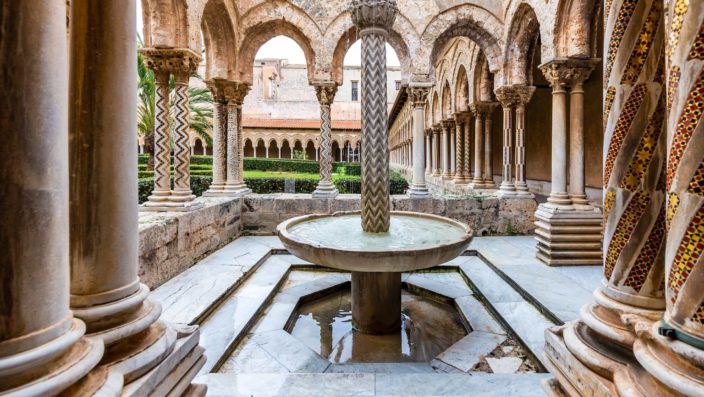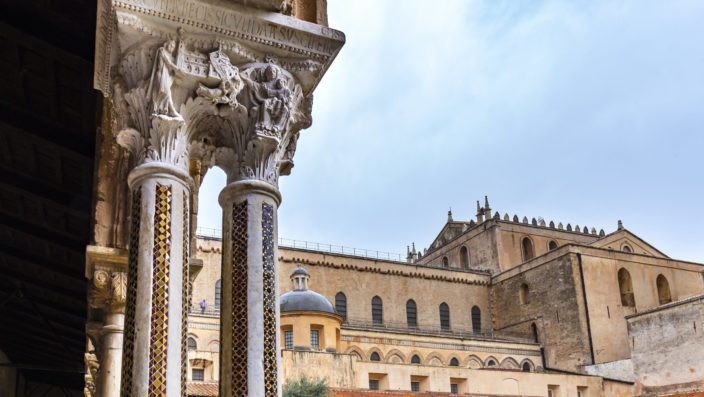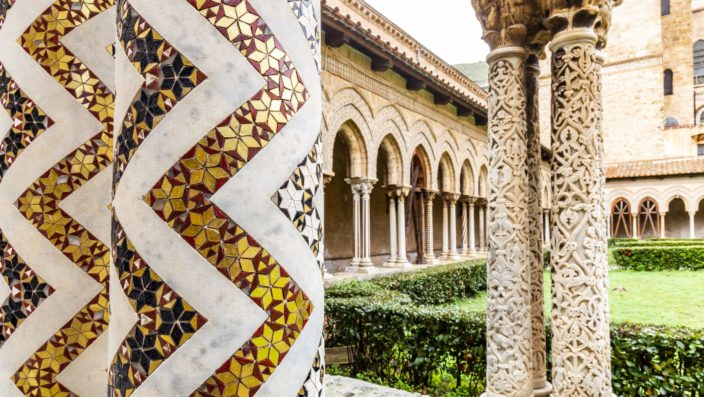WORK IN PROGRESS
The Cloister of the Benedictines was in need of urgent maintenance work. We apologize for the temporary inconvenience! CoopCulture offers to all visitors of the Cloister an immersive 360 ° virtual reality experience for free, to discover the areas occupied by the construction site.
Leaning against the south side of the Cathedral is the Cloister, a place of fundamental importance for monastic life over the centuries, which today represents a very significant monument and one of the best preserved examples of Norman art in the western world.
It has a square structure with a length of 47 meters on each side, with a portico bordered by pointed arches supported by pairs of thin columns.
The arches are underlined by two decorated frames similar to those already seen on the facades or in the area of the apses, and have a very protruding under-arch which, with its ribbing, had the practical function of supporting structures in wood or other material.


